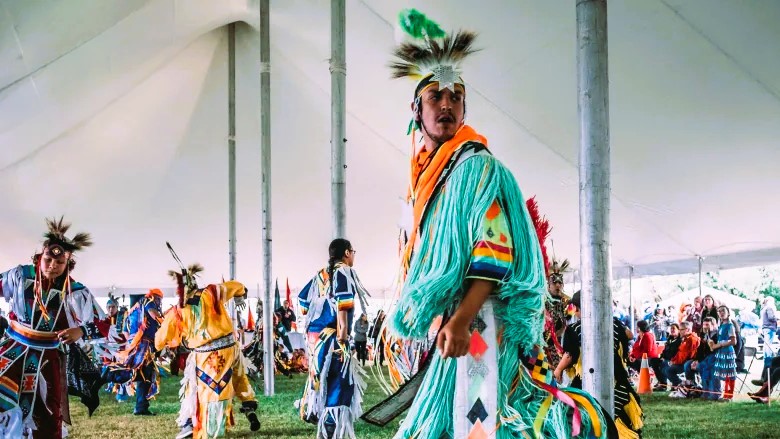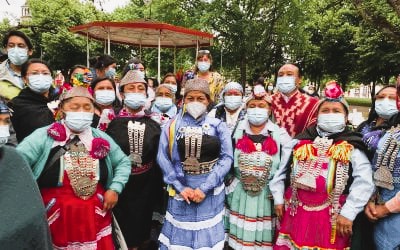The rich tapestry of Indigenous cultures and histories in Canada is a testament to the diversity and resilience of the First Nations, Inuit, and Métis peoples. In recent years, there has been a growing recognition of the importance of amplifying Indigenous voices and stories, allowing for a more inclusive and comprehensive understanding of Canada’s past, present, and future. This article shines a spotlight on the efforts to elevate Indigenous voices, the significance of storytelling, and the ongoing initiatives that foster a deeper appreciation for Indigenous perspectives.
The Power of Indigenous Stories
Oral traditions have been a cornerstone of Indigenous cultures for generations, passing down knowledge, wisdom, and cultural identity through storytelling. Today, Indigenous voices are finding new platforms to share their stories, ensuring that their narratives are not only heard but also acknowledged and respected.
- Cultural Preservation: Indigenous stories are vital vessels for preserving cultural heritage. Through storytelling, traditions, languages, and values are passed down from elders to younger generations, fostering a sense of belonging and continuity.
- Challenging Stereotypes: By sharing their stories, Indigenous voices challenge stereotypes and misconceptions that have persisted over time. These narratives provide a nuanced understanding of Indigenous experiences, dispelling myths and fostering a more accurate portrayal.
- Healing and Resilience: Many Indigenous stories embody themes of resilience, survival, and healing. Narratives of overcoming adversity contribute to a broader understanding of historical and contemporary challenges faced by Indigenous communities, while also highlighting their strength and endurance.
Media Representation and Indigenous Voices

In recent years, there has been a concerted effort to increase the representation of Indigenous voices in mainstream media, acknowledging the importance of diverse perspectives in shaping a more inclusive national narrative.
- Film and Television: Indigenous filmmakers and storytellers have gained prominence in the film and television industry, producing works that explore a wide range of themes, from historical narratives to contemporary issues. This visibility allows for a more authentic representation of Indigenous experiences.
- Literature and Poetry: Indigenous authors and poets are making significant contributions to Canadian literature. Works by writers such as Thomas King, Eden Robinson, and Leanne Betasamosake Simpson offer readers a unique glimpse into Indigenous perspectives, fostering greater empathy and understanding.
- Digital Platforms: The rise of digital platforms has provided Indigenous creators with new avenues to share their stories. Podcasts, online publications, and social media have become powerful tools for reaching diverse audiences and amplifying Indigenous voices. Read about Canadian agricultural innovations here.
Initiatives to Elevate Indigenous Voices
- Indigenous-Led Media Outlets: The establishment of Indigenous-led media outlets has been instrumental in providing a platform for Indigenous voices. These outlets prioritize Indigenous perspectives, stories, and issues, ensuring that narratives are framed by those with firsthand experiences.
- Cultural Competency Training: Across various sectors, there is a growing recognition of the need for cultural competency training. This includes educational programs, workshops, and resources designed to enhance understanding and respect for Indigenous cultures and perspectives.
- Support for Indigenous Storytellers: Initiatives that provide financial support, mentorship, and resources for aspiring Indigenous storytellers contribute to the continued growth of Indigenous representation in the arts and media. Funding opportunities empower creators to share their stories authentically.
- Community-Led Storytelling Projects: Community-led storytelling projects empower Indigenous communities to share their stories on their terms. These projects often involve collaborative efforts with storytellers, artists, and community members, fostering a sense of ownership over narrative representation.
Challenges and Opportunities

While progress is being made, there are still challenges to address in ensuring the sustained elevation of Indigenous voices:
- Cultural Appropriation: The risk of cultural appropriation remains a concern, emphasizing the importance of respectful collaboration and consent when sharing Indigenous stories.
- Resource Disparities: Disparities in resources and opportunities persist, limiting the ability of some Indigenous storytellers to access broader platforms. Continued support and investment are essential to address these imbalances.
- Ensuring Authentic Representation: Authentic representation goes beyond tokenism. Efforts must be made to ensure that Indigenous voices are not only present but are authentically portrayed, reflecting the diversity within Indigenous communities.
Conclusion
The elevation of Indigenous voices in Canada is an ongoing and essential journey towards a more inclusive and equitable society. Recognizing the power of storytelling and the diverse perspectives within Indigenous communities contributes to a shared understanding of the past, present, and future. As Canada continues to navigate its path towards reconciliation, the importance of centering Indigenous voices in the national narrative cannot be overstated.
For more information on Indigenous perspectives and initiatives in Canada, you can visit Wikipedia for a comprehensive overview. Additionally, the official website of the Government of Canada provides information on Indigenous policies, programs, and initiatives. These resources offer valuable insights into the ongoing efforts to elevate Indigenous voices and foster a more inclusive society.
